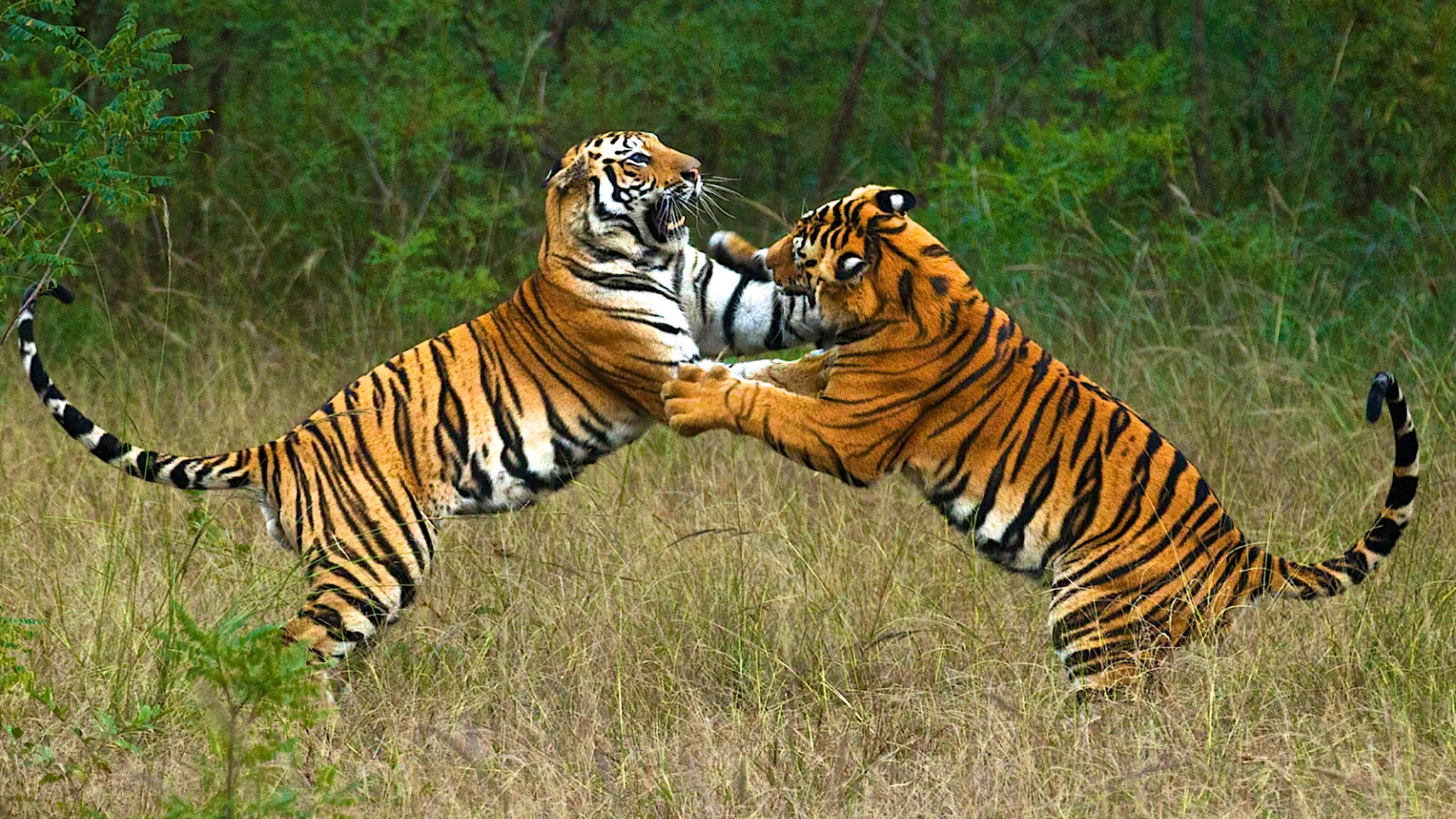Explore Panna in Comfort: Curated Luxury Jungle Escapes
Overview: Explore the wild beauty of Panna National Park while staying in some of Central India’s most enchanting
India is home to an incredible diversity of big cat species, from the majestic Royal Bengal Tiger to the elusive Snow Leopard. Oyepedia Travel LLP brings you a unique exploration of the four most iconic big cats of India: the Royal Bengal Tiger, Asiatic Lion, Indian Leopard, and Snow Leopard. Read on to discover fascinating facts about these majestic predators, their distribution, diet, and conservation efforts, along with recommended safari destinations to experience them in the wild.

The Royal Bengal Tiger, also known as the Indian Tiger, is the most populous tiger subspecies in the world. Recognized for its distinctive orange coat with black stripes, the Bengal tiger exudes power and grace. Male tigers can measure up to 122 inches in length, including their tail, and weigh between 400–550 pounds, while females are slightly smaller.
– Distribution and Population: Bengal tigers primarily inhabit India, with smaller populations in Bangladesh, Nepal, and Bhutan. India’s tiger population was estimated at 2,967 in 2021, a testament to ongoing conservation efforts under “Project Tiger.”
– Diet: These apex predators hunt ungulates such as deer, wild boar, and buffalo, consuming up to 40 kg of meat in one sitting.
– Threats and Conservation: Poaching and habitat destruction are major challenges. Initiatives like tiger reserves and the Indian Wildlife Protection Act of 1972 have played a vital role in stabilizing tiger numbers.
– Top Destinations: Ranthambore, Corbett, Bandhavgarh, Kanha, Pench, and Panna National Parks are among the best places for a tiger safari.
– Best Time to Visit: February to April offers the most promising sightings.

The Asiatic Lion is a species of Panthera leo found only in India, particularly in Gujarat’s Gir National Park. Smaller than their African counterparts, these lions are uniquely adapted to their semi-arid habitat.
– Distribution and Population: Once widespread across Asia, the Asiatic lion now exclusively inhabits Gir National Park. The 2020 census recorded a population of 674 individuals.
– Diet: Asiatic lions prey on deer, antelope, and wild boar, and occasionally feed on livestock.
– Threats and Conservation: Habitat fragmentation, poaching, and genetic inbreeding pose significant risks. Conservation measures include securing Gir’s ecosystem and reducing human-wildlife conflict.
– Top Destination: Gir National Park remains the only place to see Asiatic lions in the wild.
– Best Time to Visit: October to June is ideal for lion sightings.

The Indian Leopard, a subspecies of Panthera pardus, is known for its adaptability and stealth. With a wide geographic range, it thrives in diverse habitats across India.
– Distribution and Population: Leopards are found in all forested regions of India, except deserts and high altitudes. Their population was estimated at 12,852 in 2018.
– Diet: These opportunistic hunters prey on deer, langurs, wild boar, and smaller mammals, often dragging their kills up trees to avoid competition.
– Threats and Conservation: Poaching and habitat loss remain major concerns. Despite these challenges, India’s leopards exhibit remarkable genetic diversity.
– Top Destinations: Jawai Leopard Reserve, Jhalana Leopard Safari Park, and Satpura National Park are prime locations.
– Best Time to Visit: Leopard safaris are most rewarding from September to February.

Snow leopards, elusive and enigmatic, inhabit the high-altitude regions of the Himalayas. Known for their thick, smoky-grey fur and long tails, these cats are perfectly adapted to their cold, rugged environment.
– Distribution and Population: Snow leopards are found in India’s Himalayan states, including Jammu & Kashmir, Himachal Pradesh, and Arunachal Pradesh. India’s population is estimated at 450–500 individuals.
– Diet: Their prey includes blue sheep, ibex, and smaller mammals like marmots. These cats can take down prey three times their body weight.
– Threats and Conservation: Overgrazing, poaching, and habitat loss are significant threats. Conservation efforts focus on anti-poaching measures and community involvement.
– Top Destinations: Kibber and Spiti Valley in Himachal Pradesh are among the best places for snow leopard sightings.
– Best Time to Visit: February and March are optimal, as snow leopards descend to lower altitudes in search of food.
Experience the wild beauty of India’s big cats with Oyepedia Travel LLP. From thrilling tiger safaris to serene snow leopard treks, we offer curated tours that bring you up close to these majestic creatures. Plan your adventure today and contribute to their conservation through responsible tourism.
Have questions or ready to plan your adventure? Contact us today and our team will help you craft the perfect wildlife experience.